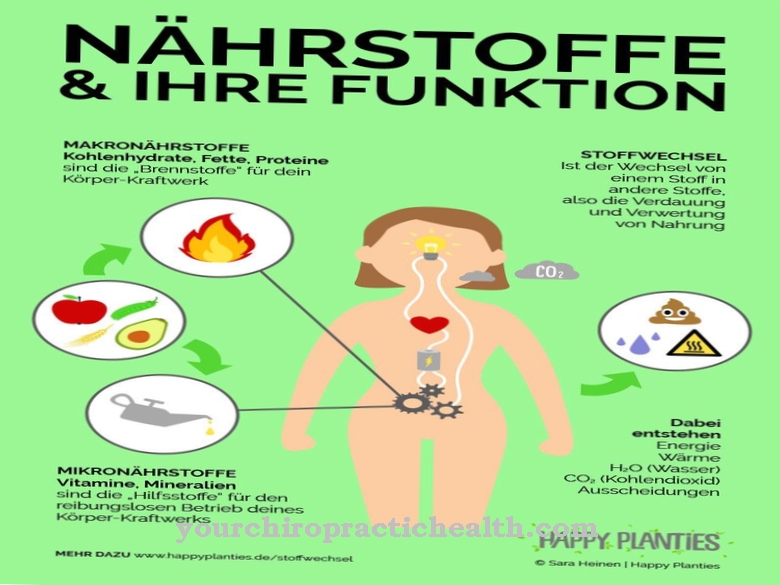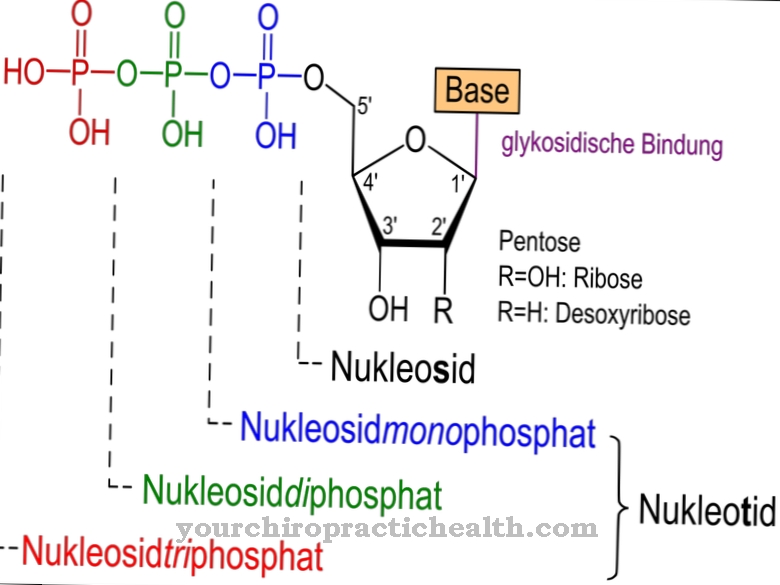Saponins are soap-like compounds that are only formed in plants. The individual molecules consist of a hydrophilic and a lipophilic part. Their structures, properties and modes of action are very diverse.
What are saponins?
Saponins are biological compounds that are only formed in plant tissues. They represent secondary plant substances. Furthermore, they are subject to a great structural diversity. In their basic structure they consist of a sugar component and a non-sugar component (aglycon) in the molecule.
The sugar content is glycosidically bound to the aglycon. The sugar or carbohydrate components are usually made up of chains of D-glucose, D-fructose, D-galactose, D-glucuronic acid or other sugar building blocks. Three different structural components can serve as aglycones. These are the steroids, steroid alkaloids or terpenes. The aglycones form the lipophilic part and the sugar components form the hydrophilic part of the molecule. Since the molecule has both lipophilic and hydrophilic properties, it can reduce the surface tension of water. It therefore foams in water and brings different compounds into solution.
With the help of saponins, fat-soluble substances are also brought into aqueous solution. So saponins are surfactants and appear soapy. The term saponin comes from Latin and means soap. Saponins usually have a fungicidal or antibacterial effect in the plant. Due to the similar structure of the sterols found in fungal membranes, larger molecular complexes can form, which ensure pore formation within the fungal membranes. This leads to the destruction of the fungal cells. Antibacterial saponins have a similar effect.
Function, effect & tasks
For humans, only the saponins found in plant foods play a major role. Due to their great structural diversity, the mode of action of the individual saponins is different and often still unexplored.
Usually they have positive properties or are neutral. In rare cases, toxic effects have also become known. For plants, they mean defensive ingredients that work against fungi, bacteria and insects. The lack of an active immune system in plants makes it necessary for them to develop chemical defense mechanisms. However, some saponins also have clear positive health effects in humans and animals, so that they play an important role in herbal medicine. Depending on the structure of individual saponins, anti-inflammatory, strengthening, expectorant, diuretic or hormone-stimulating properties of this group of substances were discovered.
Due to their special structure, saponins can also bind cholesterol and thus contribute to lowering the cholesterol level. At the same time, there are studies showing a preventive effect of saponins against colon cancer by exerting an inhibitory influence on cell division. However, many medical influences are not yet fully understood and require further investigation. In addition to cholesterol-lowering effects, saponins also have blood pressure-increasing effects and can thus be used for low blood pressure. Immune modulating influences are also observed.
Education, occurrence, properties & optimal values
As already mentioned, saponins are only found in plant tissue. There they are mainly found in particularly nutrient-rich parts of the plant. These include roots, flowers, leaves, tubers or seeds. Tomatoes, potatoes, peas, soybeans and spinach are particularly rich in saponins. Certain herbs have a positive health effect precisely because of the saponins they contain, such as ginseng or certain types of tea.
Chestnuts also contain high concentrations of saponins. In the past, the juice of the roots of the soapwort was used as a detergent because of the saponins it contained. The saponins are formed by a glycosidic connection of aglycones, which mainly consist of a basic steroid or terpene structure, with a carbohydrate component. The aglycones do not have any polar functional groups, so this molecular component dissolves in fat-like substances. The carbohydrate portion contains many hydroxyl groups that induce intense water solubility of this part of the molecule.
Because of this fact, saponins are good solubilizers. They enable many substances to overcome the phase boundary between two components that cannot be mixed with one another. This also explains the interaction of saponins with membrane components of various microorganisms such as bacteria or fungi. The most important suppliers of saponins for medicinal purposes are legumes, asparagus, sugar beets, beetroot, horse chestnuts and daisies.
Diseases & Disorders
In addition to positive effects, the ingestion of saponins can also lead to health problems. For this, however, very high concentrations are usually required, which cannot be reached even when consuming foods with a high saponin content. However, when saponins come into contact with the bloodstream, lower concentrations are sufficient to trigger hemolysis.
Usually this is just a hemolytic effect, in which blood cells are broken down due to their interaction with saponins. This fact is also used as a quantitative standard method in blood tests, among other things. If the intestinal wall is inflamed, the influence of saponins can increase the permeability of the intestinal wall. Overall, however, the amounts ingested through food are rarely sufficient for such an effect. However, certain side effects can occur when consuming licorice.
Licorice contains large amounts of glycyrrhizic acid. This is a saponin found in the roots of the licorice plant. Licorice is made from the liquorice plant. Glycyrrhizic acid inhibits the formation of cortisone from cortisol.Cortisone is the inactive form of the hormone. The active cortisol non-specifically occupies the receptors of the mineral corticoids and produces effects similar to the mineral corticoid hormone aldosterone. The mineral metabolism comes out of balance in the form of fluid retention, hypokalaemia and hypertension, a phenomenon that can occur with increased liquorice consumption.



























